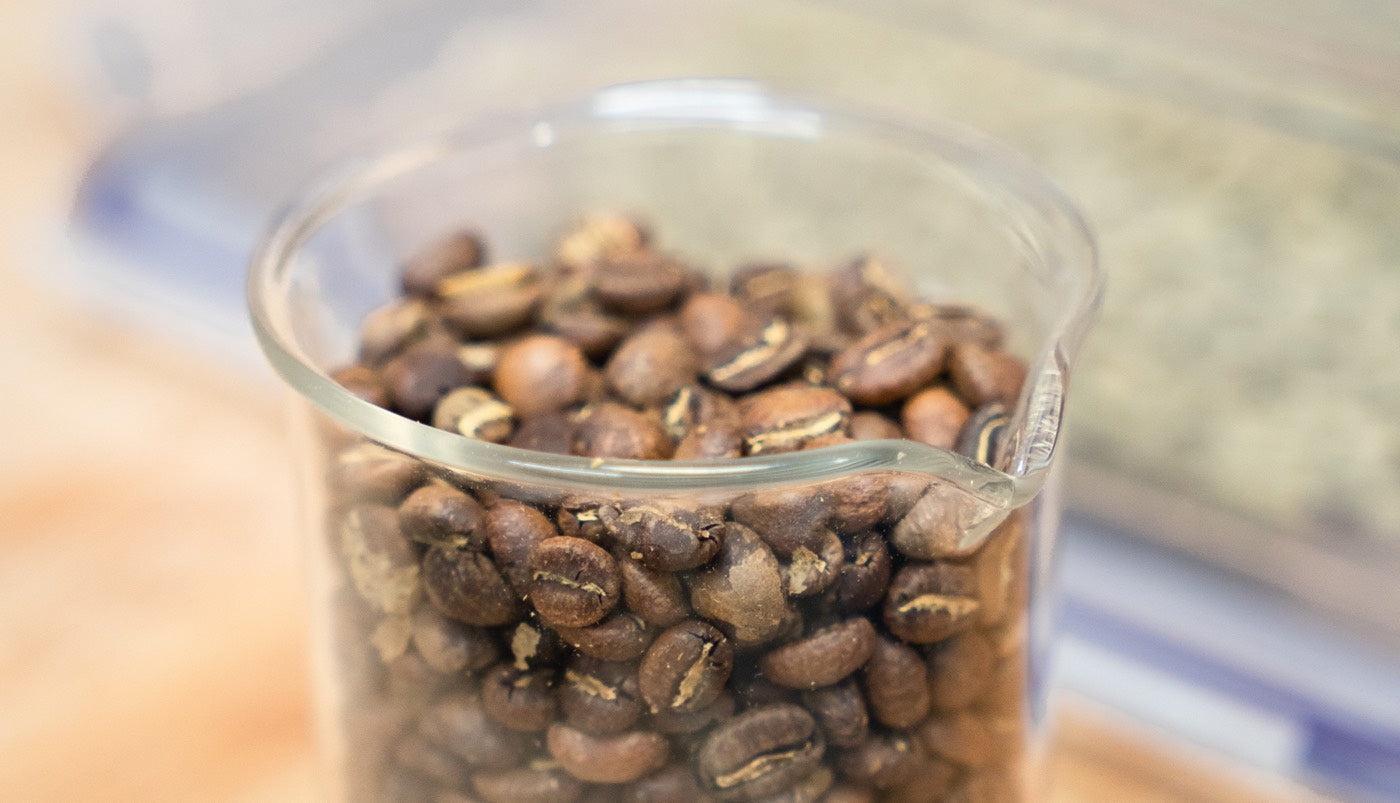Free shipping across Canada 2 bags or 1kg 🤩
Resting Coffee - How Long To Let Rest After Roasting ?
Last edit Oct 15, 2025 ● Published Jan 28, 2024 ● Jasmin Tétreault
As coffee lovers we’re often told to choose coffee that is recently roasted, which is a great idea. However, it would be easy to follow that logic and conclude that that the fresher the coffee, the better it is but this is not necessarily true.
Brewing coffee straight from the roaster is really not advised because coffee actually needs some time to ‘rest’ after roasting before it is at its best.
So, what is the optimum time to drink coffee after roasting, and how does resting benefit the beans?
The Science Behind Resting Coffee
During the roasting process, green coffee beans release moisture, reducing their density and trapping pockets of CO² gas inside the bean. While some of this gas is released during the roast (roasters hear a cracking sound, similar to popcorn), a lot of it remains within the structure of the coffee beans.
The release of CO² does not stop once roasting is complete. Moreover, coffee does not de-gas at a constant rate; losing much more in the first few days after roasting and slowing over time. This is why most coffee bags have a de-gassing valve; to prevent explosions as the coffee continues to expel gas after it has been roasted.
In this way, coffee’s cellular structure, density and most importantly, flavour can alter significantly long after roasting has occurred. Samo Smrke, Scientific Associate at the Zurich University of Applied Scientists, studied coffee freshness and found that the amount of gas present within the roasted coffee beans directly affected crema volumes, flow dynamics and the quality of coffee extraction. Freshly roasted coffee produced a much higher volume of crema and flowed much faster (and therefore extracted less flavour) in comparison with coffee which had been rested for 10 days and for 2 months.
He also noted that while there is some loss of positive aromas in the first few days after roasting, there is also a significant loss of methanethiol which is associated with sharp, sulphuric flavours - obviously not desirable in a cup of coffee.
It is also accepted within the roasting profession that the style of roast affects how long coffee should rest and how beneficial it is. Roasting coffee for longer, or at higher temperatures further breaks down the cell walls and leaves coffee beans more porous. Lightly roasted coffee retains a dense structure with only very small routes to the surface for the trapped CO². Therefore, the lighter the roast, the longer it will take to de-gas. If you prefer a light-roast, you will notice a bigger benefit to resting your coffee and it is advised you rest your coffee beans for slightly longer for the very best outcome.
There is also some discussion around the type of roaster used (air roaster vs drum roaster) and how this can impact a coffee’s need for resting. Though this remains anecdotal at present, it is certainly an interesting field of study to keep an eye on.
Why Rest Coffee?
As we touched on earlier, resting coffee has deeply beneficial effects on the flavour, aroma and performance of coffee for the people enjoying the finished product.
Samo Smrke’s research demonstrated that whole coffee beans which retain an excess of CO² release it quickly when ground. The presence of this CO² during extraction not only leads to excess crema and poor extraction, but it can also contribute unpleasant or harsh flavours, which can be mistaken for a poor-quality coffee.
By leaving coffee to de-gas and rest for a short period of time, we allow the flavours to unfold and also leads to greater clarity in the cup. Rested coffee extracts more consistently, too since the CO² levels present remain fairly steady. This makes dialling in espresso or tweaking your filter coffee recipe much easier.
It is important to note that while resting coffee is encouraged for a short amount of time, freshness is still paramount to the quality in the cup. While sensible storage can help with freshness, we recommend using your freshly roasted coffee as soon as you can after the resting period.
How long should coffee be rested for?
Most research suggests that coffee expels about 40-70% of its trapped CO² within the first 24 hours after roasting. Additionally, most roasters would not advise leaving coffee to rest beyond 2-3 weeks but there is no hard and fast rule for exactly how long to rest freshly roasted coffee beans. As with most things coffee-related, it depends on a number of factors.
As discussed, the roast level of your coffee will partly determine how long it should be rested for, with darker roasts requiring much less time. The below guidelines are for medium roasts, so if you prefer a lighter roast, perhaps add a couple of days. Similarly, if you’re into dark-roasted coffee, reduce the time by a few days. It may even be optimal to brew very dark roasts after just 24 hours’ rest.
It also depends on how you intend to brew your coffee. Since making espresso is brewed at pressure, it is recommended to rest the coffee for a little longer for peak consistency.
How long to rest coffee:
- Filter coffee: 5 – 14 days
- Espresso: 7 – 14 days
Of course, there is no definitive ‘correct’ amount of time to rest a coffee and much of it will depend on your personal tastes as well. We suggest making note of any specific roaster recommendations as well as experimenting with your own preferences.
Practical Tips for Resting Coffee at Home
With a recommended rest time of between 5-14 days, it’s important to make sure your coffee is stored correctly to maintain peak freshness, whilst also allowing the CO² to escape.
As we know, airtight containers are a no-go for de-gassing coffee. However, since oxygen exposure is extremely detrimental to its freshness, the solution is a vacuum canister. These allow the CO² to safely escape but keep all the delicious flavours locked inside. Just remember to check the seal every few days as de-gassing will loosen it over time.
Additionally, light exposure, moisture, temperature fluctuations, as well as extreme heat or cold can cause coffee to degrade so make sure to store your coffee in a dry, dark place at an even room temperature.
In Summary…
- Fresh coffee is delicious, but coffee which has not been properly rested can be unpredictable, sour, and lacking in depth. If you care enough about coffee to be drinking the good stuff, give it time for the flavours to open up and most of the CO² to disperse.
- Leave coffee to rest for between 5-14 days and allow more or less time depending on the roast profile.
- All good coffee has a ‘roasted on’ date on the bag. Make note of this and start experimenting. Take time to notice how the coffee changes in aroma, flavour and performance as it ages. There is no right/wrong way to drink coffee so find out your peak rest-period for your favourite coffees and enjoy them.
The ultimate key to making perfect coffee?
Freshly electric roasted specialty beans

Eldorado - Best seller for 3 years
An affordable specialty coffee from Brazil. Medium roast with comforting chocolate aromas. Ideal for a well-balanced, smooth, and comforting espresso.
Eldorado is produced by the Barbosa farm in Brazil, a partner of Nucleus for 3 years now.




Comments
Bien
Your comment